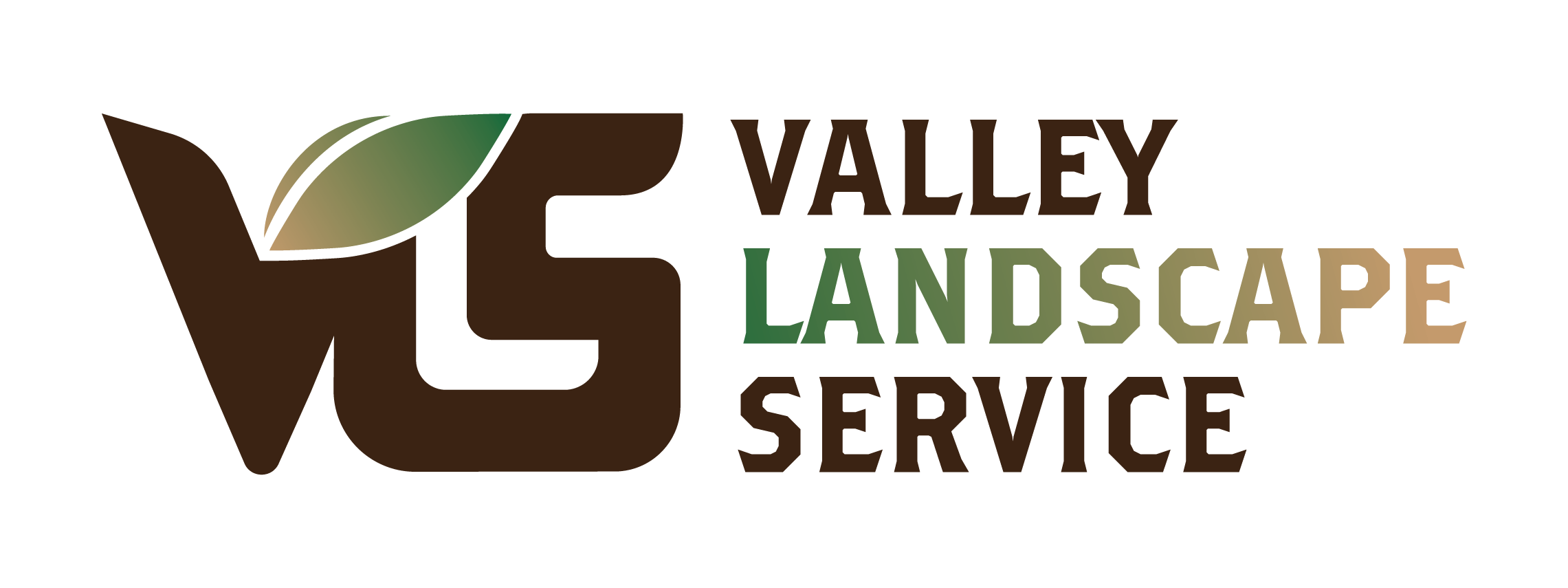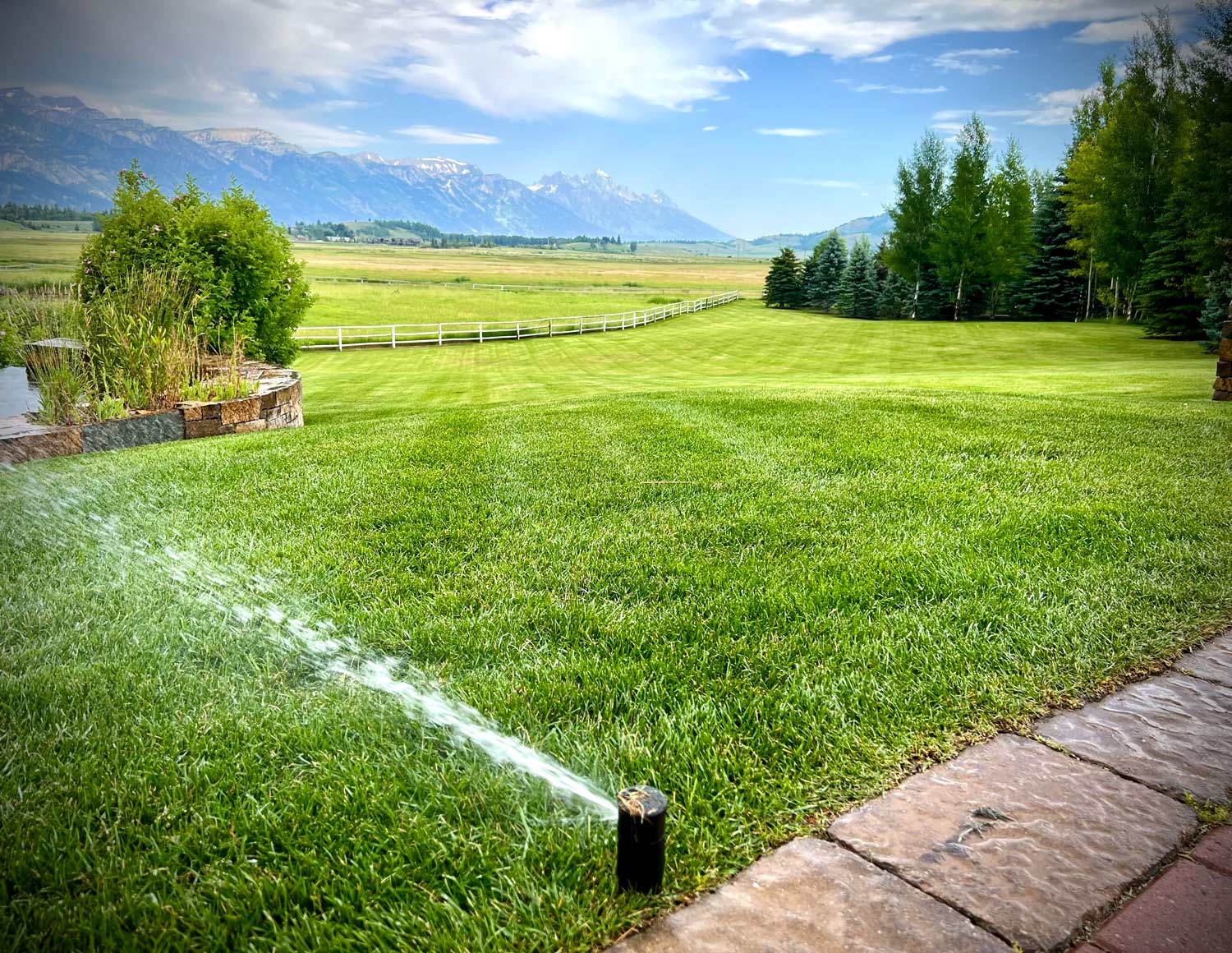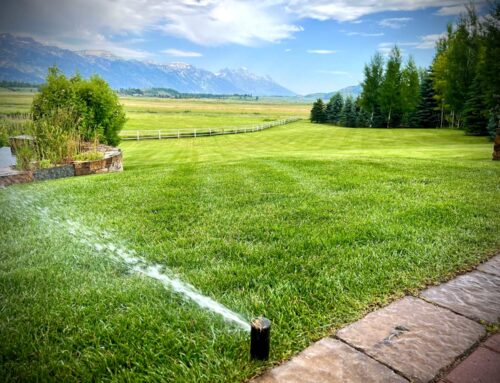Valley Landscape Service is committed to the stewardship of natural resources, especially water management. We are 100% in support of conserving water, installing smart controls, keeping systems maintained to reduce waste and encouraging the acceptance of dry spots in lawns during the hottest weeks of summer. We also desire to have a seat at the table with the Town and County decision makers to help draft smart landscape master plans over time. I wish I could snap my fingers and suddenly convert every property to a drought tolerant efficient user of water, but we have what we have. The disconnect between where we are and where we need to be is a long road ahead but sudden and drastic water cuts to your landscape through an emergency ordinance restricting water days could create lasting negative consequences to your landscaping.
Over the 4th of July, the Town of Jackson experienced a failing well that put added pressure on the remaining wells. A request went out for public support to reduce landscape water use until it could be repaired. The Town reported a volunteer reduction in water use during that time of 40% and by July 6th it was communicated the well was fixed and watering could resume. As one would expect, water use swelled as irrigators scrambled to recover their stressed landscapes during the hot and dry July weather. Town water managers noticed the pumps were operating at almost max capacity and last Thursday the press release ‘Town issues URGENT irrigation restrictions’ was sent to the press.
The ensuing article was both confusing and misleading. Claiming on 7/15 that the town water system is being strained during peak times of irrigation use is in contradiction to the July 9th article claiming the infrastructure was repaired and was operating at full capacity. Using the words ‘imposing restrictions’ and ‘the following rules apply’ insinuate that an ordinance had already been created, but in the same paragraph explains that the Town Council will meet Monday to discuss an ordinance? Lastly the article mentions the problem is related to drought conditions AND a town well problem? So is the issue a lack of available water (drought) or an infrastructure problem? After the article went live, our phones started ringing with questions from confused clients.
I appreciated the subsequent conversations I was able to have with the Town water manager and the Mayor. What I learned is the Town is in process of upgrading one of the wells for west Jackson but the new well won’t be available until 2026, so right now they’re in a pickle. TOJ claims they have been trying to stem excess water use through increase of fees and also claims they have been trying to educate the public to reduce water. That may be true but I don’t ever remember seeing any press about the reasons for the price increases or their challenges with the pumping system. Reducing landscape watering needs a long term solution in the form of educating the public on availability of water, approving new landscape designs that use water efficiently and incentives to renovate old landscapes. In the short term, to keep the water system from maxing out the town should first do whatever they can to curb water in public spaces (unnecessary turf in Parks, school ROW’s etc), restrict watering of native grass areas, and request voluntary assistance from the public to make intelligent adjustments to their run times. I believe with clear communication to the public about the reason for needing to reduce water, the community will listen and take action.
Knee jerk reactions to impose drastic reductions during the hottest time of the year will create unintended consequences. High value trees will stress out, weed pressure will go up and the overall aesthetic of our town during the critical tourist season will be negatively affected.
My recommendation to Town Council is to delay approval of an ordinance until they have done the following:
- Define for the community what percent reduction in water will allow the town pump system to operate safely. Then ask water managers for volunteer compliance to reduce water by that percentage in whatever way makes the most sense on each property to minimize negative impacts. Also, when all 3 wells are fully operational in 2026 will there still be a need to reduce water? How much reduction is needed? How much time will homeowners be given to update their landscapes so the reductions can be achieved while still maintaining properties? What is their solution to meet the ever growing demand beyond 2026?
- Clear up the confusion in the messaging to the community. The problem is related to infrastructure, not drought. Even though I agree to be water wise when drought conditions are present and I concur it’s been an abnormally dry June and hot July, but a quick check of this website https://www.usbr.gov/pn/hydromet/burtea.html says that Jackson Lake and Palisades are both basically full. The drought monitor shows Teton County in a moderate drought, level 2 of 5 with 5 being extreme. We’re not exactly in dire straights with availability of water and their is a the North American Monsoon season right around the corner. Mixing the message to say the problem is related to drought creates confusion and panic.
- A request for voluntary reductions in irrigation in the realm of 20% less watering for the next three weeks will get us over the hump. By mid August days are getting shorter, Evapotranspiration decreases which means plants don’t need as much water.
- Consult the Pros to create smart Best Practices that can be implemented immediately to achieve the goal of reducing water use. Some specific ideas:
-
- Many irrigation clocks don’t have the ability to set to odd/even days. Mandating odd/even won’t work for everyone. Specific rules like that will be hard to follow, create confusion and be difficult to enforce.
- Use the ‘Seasonal Adjust’ feature to turn down the run times globally. This can be done on any clock, it is simple and will reduce the water use by a known percentage.
- Turn off all native grass sprinkler irrigation.
-
Other Best Practices we have already implemented on your property to conserve water:
- Mow at 3″ to allow the turf to grow a deeper and more efficient root system and require less water.
- Keep Nitrogen fertilizer at or below 2 lbs/100 sq. ft./year to limit excess respiration (water loss in soil).
- Utilizing wherever possible and promoting the installation of rain/wind sensors and Wifi based remote irrigation clocks that work with weather forecasts to automatically adjust water use based on temperatures and ET.
- Deep and infrequent watering that uses longer run times only 4-5 days per week and not watering during daytime hours.
- Utilizing low precipitation rate nozzles allowing the water to soak into the soil as it irrigates instead of running off.
- Using seasonal adjustments to globally change run times throughout the season as plant water needs change.
- Auditing irrigation systems and upgrading old heads with updated nozzles that deliver water more efficiently.
While we are supportive of conserving water and doing what we can to help the Town ensure public safety, we will not visit your property to turn down your water using their current recommendations unless you request it, or unless an ordinance is approved. I believe what the Town has proposed could cause irreversible damage and add unnecessary weed pressure. If you would like to do your part we suggest using the seasonal adjust feature to turn down run times for bluegrass programs to 80% and turn off all native grass irrigation. There are abundant videos on youtube explaining how to do this on all models of clocks, but if you’d like our help please email tray@vlsjh.com
We believe this situation will help wake up the public and accelerate the conversation of what smart landscape design should look like. We are available to meet with you and talk about the best way to upgrade your landscape to a water friendly design.







Leave A Comment